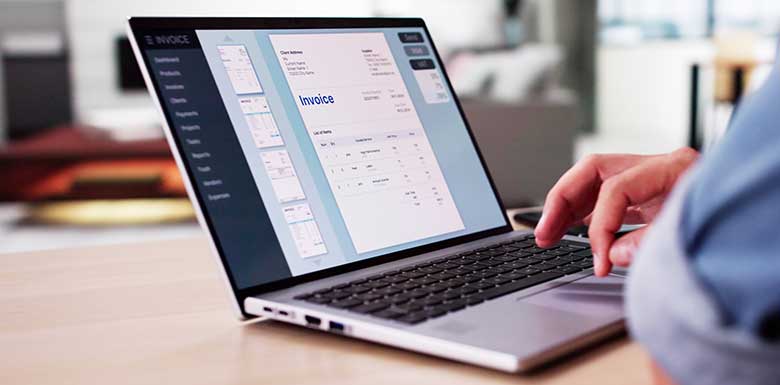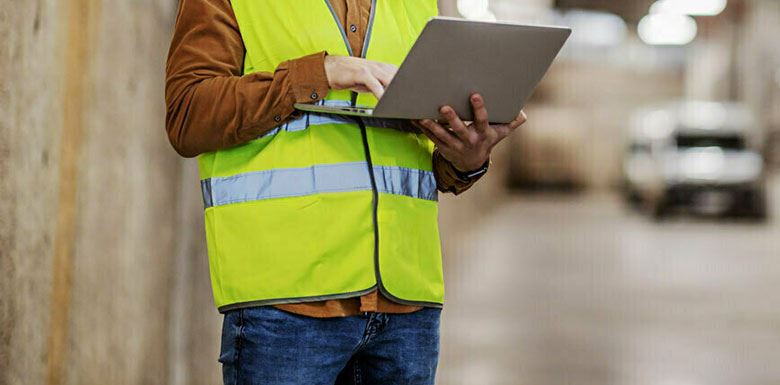What to include on an invoice
 In this article
In this article
Managing cashflow and requesting payment is a vital part of running a trade business. Whether you’re a sole trader, limited company or VAT-registered business, understanding the requirements of creating accurate and well-structured invoices is key. Not only does this help ensure you’re paid on time, but it’s also essential when it comes to preparing and sharing your tax reports.
In this guide, we’ll outline everything from what to put on an invoice and how to set it out, to how VAT registration can affect your invoicing. We’ll also highlight what to include in an invoice as a Which? Trusted Trader, helping you stay organised and keep your business running smoothly.
What is an invoice?
An invoice is a formal request for payment sent after delivering goods and services as a merchant or trader. It outlines everything you’ve provided as a service, how much the customer owes you, and when to pay it by. Unlike a bill or receipt, you’ll send an invoice to customers and clients before you receive payment.
If you or your client are value-added tax (VAT) registered, you’re legally required to submit an accurate invoice. However, even if you’re a small business that isn’t VAT registered, it’s still good practice to share an invoice.
Here’s how keeping accurate invoices can help you as a business:
- Get paid on time – Invoices can help prompt customers and clients to send payment, as well as provide evidence of your services should you need to.
- Improve bookkeeping – Invoices help you keep track of sales for tax and accounting purposes.
- Enhance professional image – A clear invoice shows customers and clients that you take your business seriously.
How do invoices work?
Invoices provide a record of your transaction, setting out clear payment terms and making sure that you’re paid the right amount. Payment obligations can vary depending on your business. You can set up deposits, early payment discounts, and terms that require customers to pay upfront.
Once your customer or client has all the information they need, they can send the payment to you according to your instructions.
It’s common to set a payment deadline to prompt the customer to send payment by a certain date. If you don’t agree to a payment deadline, they must pay you within 30 days of receiving your invoice.
Some traders and businesses find invoicing software helpful for managing bookkeeping and accounting, which can be used to set up automated reminders for customers.
When should you issue an invoice?
The right time to send an invoice can vary depending on the type of goods and services you offer. It’s often best practice to share an invoice as soon as you’ve completed the transaction and provided your services, but there may be other arrangements involved, such as:
- Paying upfront – If you’ve specified an upfront payment, you may share an invoice immediately after your services are fulfilled.
- Ongoing retainers – If you have a fixed retainer, you should set out a clear monthly invoicing period. This helps to establish clear expectations and set up predictable cash flow and resource management.
- Deposits – If your services are broken down into instalments with a deposit payment, you’ll need to record this accurately with two invoices: one to record the initial deposit transaction, and another to request the remaining balance due.
In any case, it’s important to specify the payment due date to avoid late payment. For more tips and guidance on managing delayed payments, read our guide on what to do if a customer doesn’t or can’t pay.
What to include on an invoice
So, what does an invoice need to include? There are various details you’ll need to cover when creating an invoice, which can vary depending on whether you’re a sole trader or a limited company. Creating a clear and professional invoice template can help you cover all the necessary information to meet UK legal requirements.
You must include:
- A unique, sequential invoice identification number – e.g 001, 002, 003
- Client reference/purchase order number
- Your company name, address and contact details
- The client or customer’s name (including business name) and contact details
- A detailed description of the goods and services provided – including items and costs broken down by your hourly rate, if applicable
- Supply date, detailing the date the goods and services were provided
- Invoice date
- Amount charged for goods and services
- VAT amount if applicable – including costs inclusive and exclusive of VAT
- Total amount due
- Payment terms and information – including the payment due date and how to pay (eg bank sort code and account number)
- Late payment fees if applicable
Traders can be fined for incorrect invoices, so it’s important to make sure you cover all the essential information. This is particularly vital for VAT-registered businesses, or when you come to file your VAT Returns with the HMRC.
Do I need to add VAT on my invoice?
You’ll need to add VAT to your invoice if you’re registered for VAT, which applies if:
- Your total taxable turnover in the past 12 months is above the £90,000 VAT threshold
- Your turnover is expected to go over £90,000 in the next 30 days
- You or your business is based outside of the UK
- You supply goods and services to the UK (or will supply in the next 30 days)
You can also opt into being VAT registered no matter your turnover. For more guidance on whether you should register for VAT, read our helpful guide.
Different types of invoices
You may need to provide extra details if you’re a sole trader, limited company or VAT-registered business. Find out what to put on an invoice depending on the type of business you run below:
Sole trader invoices
As a sole trader, you must include:
- Your name and trading name (this may be the same name)
- Address details where any legal documents may be delivered, if you opt to use a business name
Limited company invoices
As a limited company, you must include:
- The full company name as stated on the certificate of incorporation
- Company number
- If you choose to include the names of your directors, you must list all directors of the company
VAT invoices
Additional details for VAT invoices include:
- VAT registration number
- Detailed description of goods and services, broken down by the rate of VAT and the amount payable, excluding VAT
- Total amount payable, excluding VAT
- The rate of any cash discounts
- Total amount of VAT chargeable
- Unit prices
For more information on charging VAT and sharing accurate VAT invoices, please visit the government website.
How to lay out an invoice
Invoices typically have a running order in which to structure key information. Creating a template can help ensure consistency across all your invoices, adding personalised details such as business logos, accessible fonts, and branding. Once you start sharing invoices, you’ll have a record of previous examples to refer to as well.
It’s best practice to structure your invoice information in the following order, from the top of the page to the bottom:
- Company logo
- Unique invoice number
- Company name and address
- Company registration number
- VAT registration number
- Date of supply for goods and services
- Customer or client’s name/business name and contact details
- Description of goods and services provided
- Total amount due excluding VAT
- Total amount of VAT
- Quantity and cost per item, excluding VAT
- Total amount due, including VAT
- Payment terms, deadlines and details
Tips for what to include on an invoice as a Which? Trusted Trader
We’ve highlighted the key details you need to include in an invoice to meet UK legal requirements, but there are plenty of other ways to strengthen your invoices. To ensure they’re as clear and detailed as possible, we’ve gathered our top insights for invoicing best practices as a Which? Trusted Trader. See an example here.
- Add an ‘Invoice’ title at the top of the page – Make the purpose of the document clear by including ‘Invoice’ as a title in your template.
- No additional debit and credit charges – Traders should not make additional charges to customers and clients if they choose to pay by debit or credit card.
- Specify your complaints policy – Traders should include their complaints policy, as this demonstrates their commitment to resolving complaints.
- Describe goods and services in detail – As you list the work and items chargeable to the consumer, ensure that you describe exactly what goods and services have been provided, and that this matches the original quote.
How to send an invoice
Once you’ve collated all the relevant information in a formal invoice, it’s time to send it and request payment. You can send it to your customer or client via email as a non-editable PDF attachment, or you can use automated software to share the invoice with them securely.
If you decide to send the invoice manually as an email, make sure to include a clear and descriptive subject line to help your client find your invoice quickly and easily. It’s a good idea to include the following in the subject line:
- Invoice number
- Product or service name/description
- Payment due date
Creating an invoice email template is another effective way to streamline this process – just remember to change the relevant information and attach the invoice before sending!
Develop your business as a Which? Trusted Trader
Invoicing is just one of many common admin tasks you’ll do as a trader, and will soon become routine. Knowing what to include in an invoice is crucial for providing clear payment instructions and remaining compliant, thereby protecting your livelihood and shielding your business from delayed payments and unnecessary fees.
It’s also important to stay aware of the potential risks businesses can face, including becoming a target of invoice fraud. Protect your business and learn more about how invoice fraud can affect traders and how to avoid scams.
Become a Trusted Trader
When customers see you displaying our logo, they'll know you're a trader they can trust
Find out more




